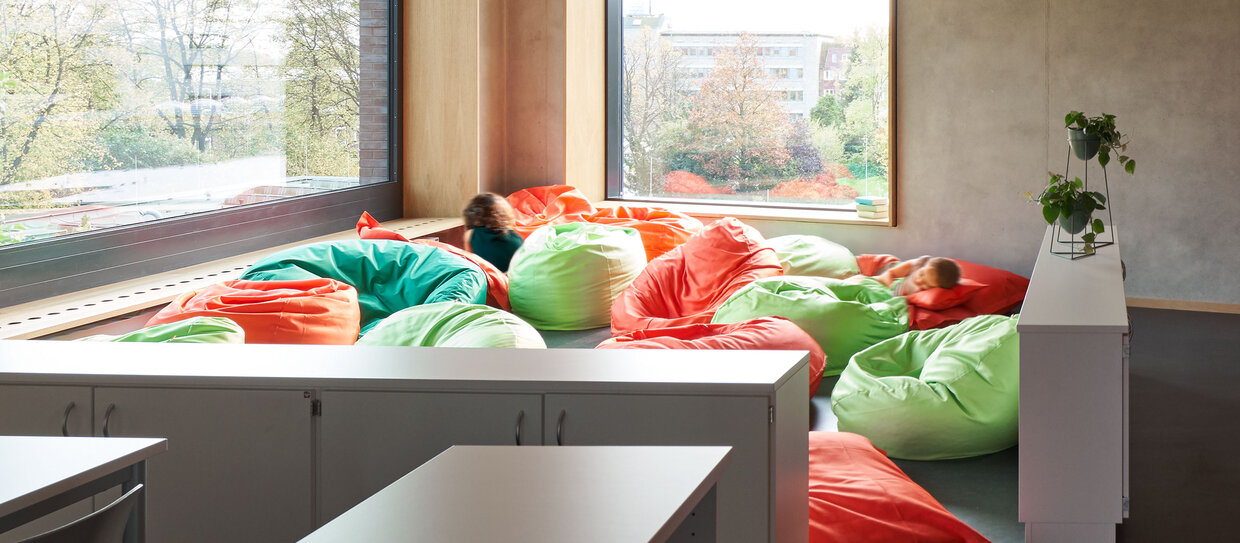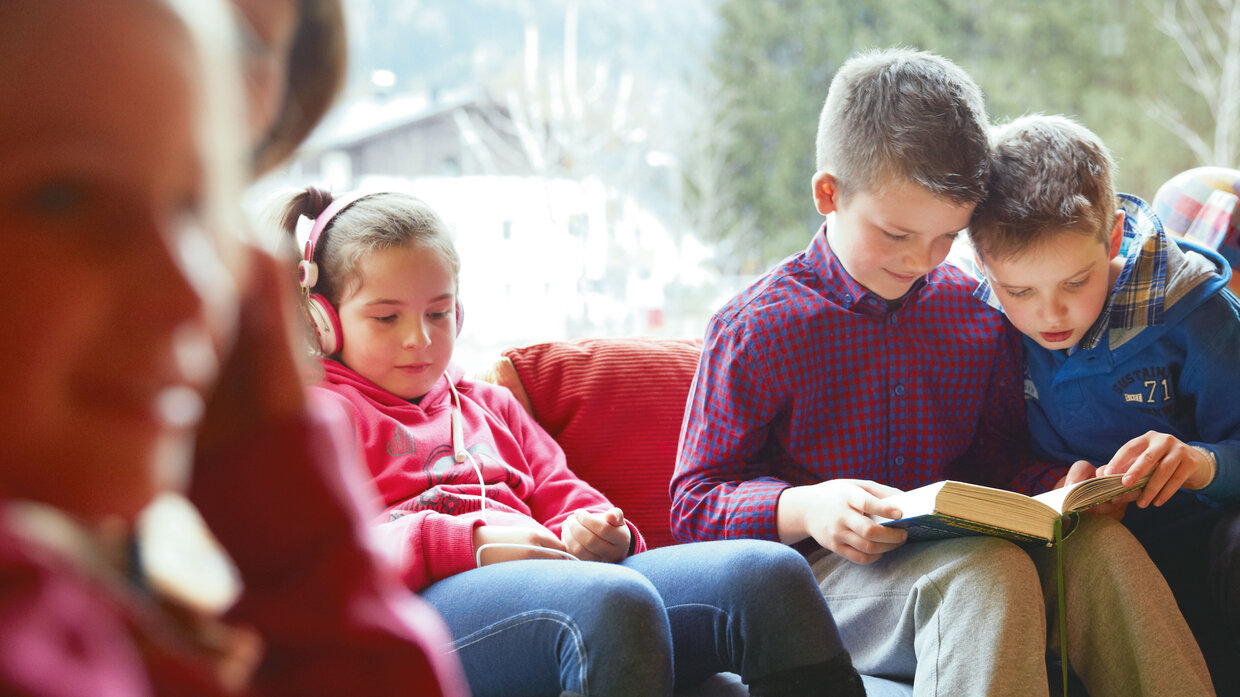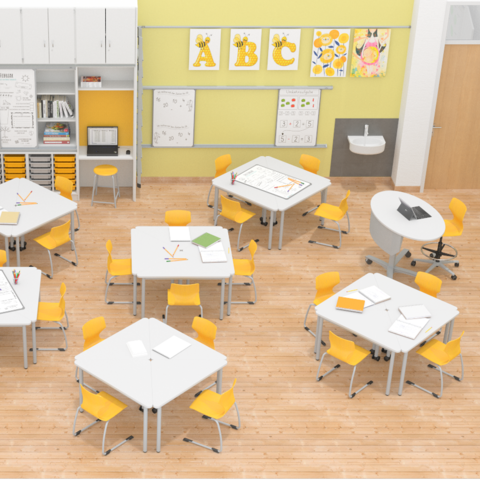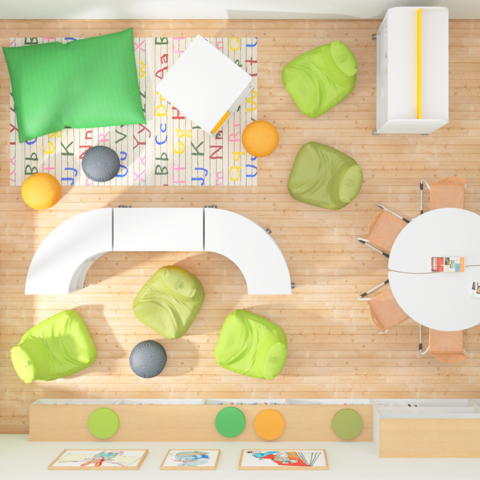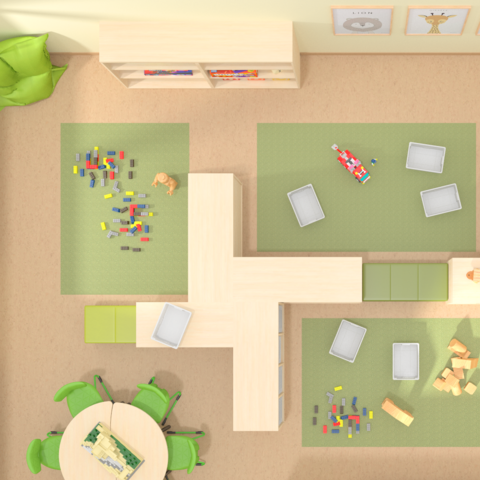24.05.2024
Designing primary schools needs-orientated
feeling good all day
When children spend more time at school than at home, the school becomes their living space. The key to a feel-good place is the children's life themes and needs.
It's 7 o'clock and the sun hasn't quite risen yet as the first children arrive on the school grounds, all still a little sleepy. But the more children arrive, the livelier the conversations become as they take off their jackets and shoes. Once they have all arrived, they start the morning circle together with their teacher. A whole day lies ahead of them. What encounters, discoveries and insights does it hold in store?
All-day care will soon be compulsory at all primary schools in Germany. From 2026, all children in the first grade will be entitled to a place in all-day care, followed by the other primary school grades by 2029. The federal government is supporting the federal states and local authorities financially in equipping all-day care. The law enables parents to better combine family and career and gives all children better educational opportunities to fulfil their potential.
Forms of the all-day programme
What is an open all-day school?
At an open all-day school (OGS, or open school), parents can decide for themselves whether their children would like to take part in afternoon care. Compulsory lessons take place in the morning, supplemented by voluntary lunchtime supervision and an afternoon programme (e.g. sports, music and support activities).
What is a tied all-day school?
At tied all-day schools, all children attend all-day care; learning, extracurricular activities and free time are spread throughout the day. This provides the opportunity to break away from the time structures and to interlink learning and childcare programmes.
Further information on the forms of all-day care can be found on the Federal Ministry for Family Affairs, Senior Citizens, Women and Youth.
The legal entitlement and the funding are in place - now schools are facing a mountain of challenges. Overworked teachers, too few staff and a gap between care and school make the realisation of all-day education seem utopian. And then there is the school building, which is usually the least flexible partner for a varied all-day programme with few, small and outdated rooms.
Deriving room solutions from needs
Regardless of the federal state, type of all-day programme or school mission statement, the Children's life issues and needs are the key. They determine which rooms a school needs.
Movement. The need for movement is particularly great at primary school age - even more than in early childhood. Children explore the possibilities and limits of their bodies and playfully train their body awareness and spatial experience. They can find space for this in the playground or in the gym. In order to bring movement into learning phases, space should also be created in the school building - e.g. a romping room with soft floor mats or a climbing wall.
Exploring the world with your hands. What does an earthworm feel like and how do I fold a paper boat so that it floats? The whole day should provide scope for careless trial and error and experimentation where children can be active and create their own learning experiences. They find space for this in colourful studios with cupboards full of craft materials and a variety of tools or in themed corners of multifunctional classrooms.
Concentration. And why does a boat float at all? Children have lots of questions and want to answer them independently. So that they can pursue their interests in a focussed way, they need shielded self-study areas or quiet reading corners in the classroom to get a little closer to the answer.

Using media. Few things are more enticing than the colourful world of media, which is bursting with information - children want to savour it and discover new things through play. Where better to try this out than in a library with exciting books, a diverse media centre equipped with laptops, whiteboards and audio books or a PC corner in the classroom?
Encounter. Primary school children are increasingly spending time with their peers, confiding in them and making firm friendships. They learn to socialise in a playful way. This works best when the school creates opportunities for socialising on its premises. A central meeting place is the canteen, where the children spend their lunch break - not only to satisfy their hunger, but also to chat with friends. In between, a games room or a seating circle in the classroom can also be used for socialising.
Retreat. All the new sensory impressions need to be processed and awaken the children's need for rest and relaxation. They find time for themselves in cosy learning spaces behind protective acoustic partitions, on a comfy sofa in the library or in niches with cushions.
Twice as good: The well-being of children influences their attachment to school and builds the cognitive and emotional foundation for successful learning.
If we design rooms that offer space for the diverse needs of children, we create a colourful living space in which potential can unfold in a feel-good atmosphere. And where, after a whole day, the adventurers, accomplices and learning partners, artists, athletes and researchers head home and wonder what there is to discover tomorrow.

 Deutsch
Deutsch
 English
English
 Français
Français
